As a Texas boy I am no fan of cold, or even cool weather; I like it hot so I am always delighted when spring finally arrives and I can spend my weekends in shorts and flip flops. One of my favorite signs of spring is the blooming of the redbud trees, Cercis canadensis, and this year I was delighted to see that our outstanding, Eastfield College grounds crew had planted two new redbud trees flanking one of the entrances to my building.
This first group of images were made with my trusty Nikon Coolpix P520.
 |
| My current, favorite redbud trees. |
 |
| Makes you want to sit for a while. See - Texas isn't all burning desert - at least not right now. |
 |
| What makes the redbud so beautiful are the large clusters of flowers and their amazing colors. |
 |
| These redbud flowers are fully open. You can see the tips of the stamen and pistil peaking out. |
 |
| Of course, the purpose of flowers in not to impress humans, but to attract pollinators. I got very luck to get this shot of a bee happily harvesting pollen and nectar. You can see pollen baskest on its hind legs. The flowers at the top of the image are pollinated and have begun to drop their petals. |
 |
| A small, hairstreak butterfly attempting to sip nectar. If you look closely, you can see that its tongue is touching the outside of the flower. |
 |
| The picture isn't sideways, the butterfly is. |
 |
| Petals gone, these pollinated flowers are producing seed pods. |
I took some samples back to the lab for a closer look with a dissecting microscope.
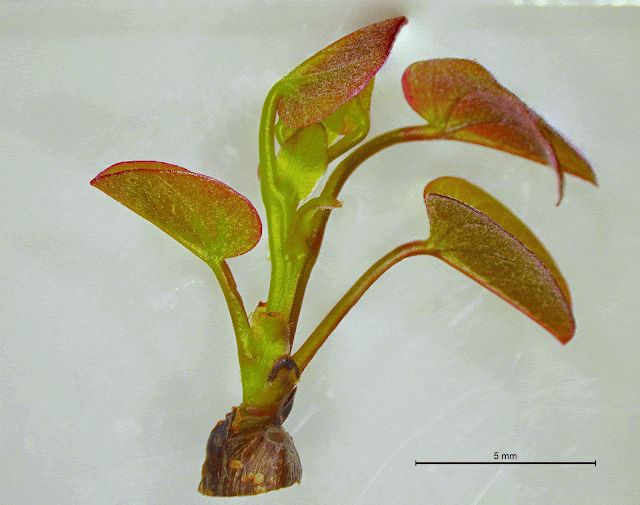 |
| The tip of a branch through which new leaves have emerged. Note the scale - 5mm is about 1/4th of an inch. |
 |
| The newly emerging leaves also contain some red pigment. The hairs on the underside of the leaf are called trichomes. |
 |
This image shows a bud that has lots of flowers. The color of the sepals is more vivid than the petals themselves. As shown in the next image, this gives the flowers a two-tone effect.
|
 |
A single redbud flower. Let's disassemble it and see what is inside. (Typical biologist - find something pretty and tear it apart to see what is inside and how it works.)
|
 |
| Removing some of the petals reveals the stamens and pistil. |
 |
| The reddish anthers open to reveal yellow pollen. The female stigma and style is just visible behind the stamens. It is the thicker structure. |
 |
| A close up of the filament and anther. You can see the individual, pigmented cells of the filaments that hold up the anthers so pollinators are sure to get coated in pollen when they visit the flower. |
 |
| The stamen in front have been removed to reveal the style and stigma. The stigma is covered in yellow pollen. |
 |
With all of the petals removed you can see the base of the stamen and pistil. Talk about gorgeous colors!
|
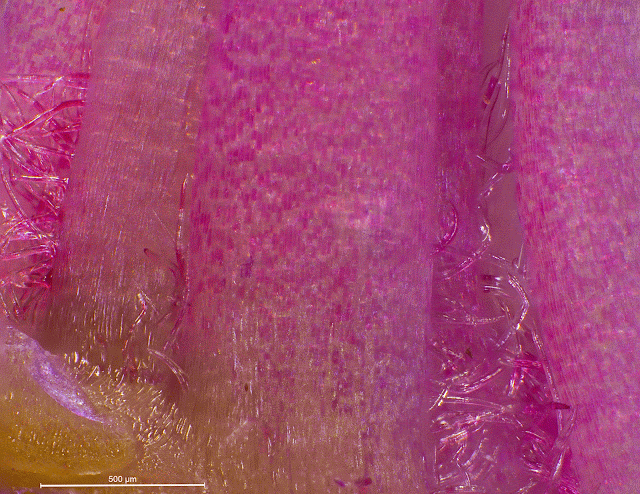 |
| In this image you can see the individual cells containing pigment. |
 |
| This is an older flower that has been pollinated and the ovary is beginning to develop into a seed pod. The thickened orange area is where the seeds are developing. |
 |
| These are flowers with more developed seed pods. Note the same colors on the pods as in the previous picture. |
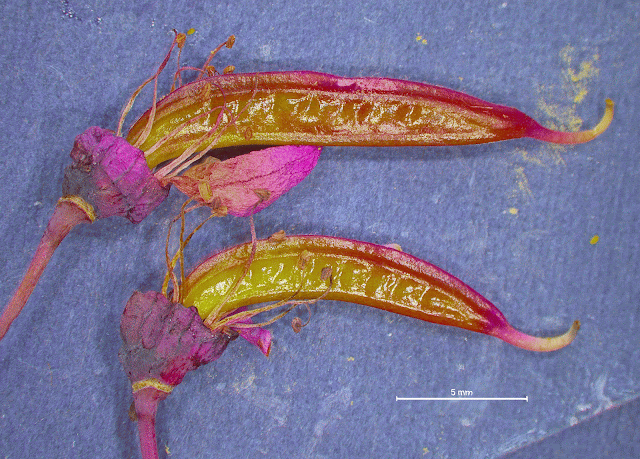 |
| I have removed the remaining petals so you can see the seed pods. This type of fruit - a pod that opens along the seams on two sides - means redbuds are legumes, right there along with peas, lentils, bluebonnets, beans, and mesquite trees. |
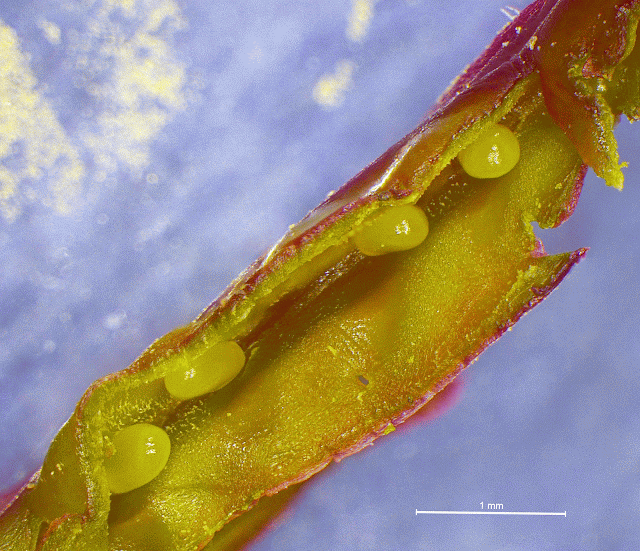 |
| One of the seed pods is sliced open to show the developing seeds. |
 |
Developing seeds. Once fully developed, the seed pod will dry out and form the dry, brown pods you find on these trees.
The following images were made with the scanning electron microscope.
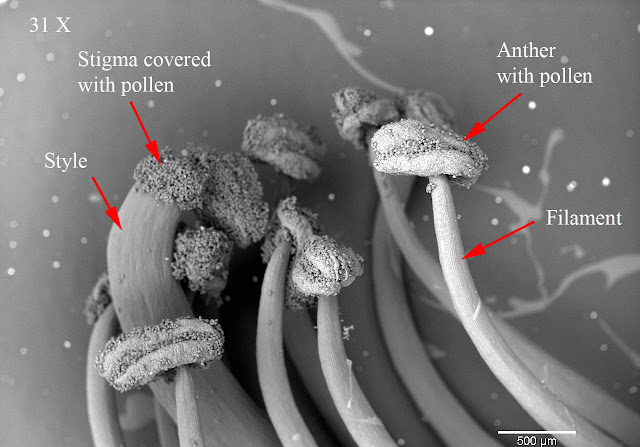 |
At 31x magnification, you can see the reproductive structures of the redbud in detail. (Warning: Botany Ahead!) The style connects the stigma to the ovary containing the eggs. The stigma contains sugars that allow pollen grains to stick and germinate forming the pollen tubes and two sperm each; one to fertilize the egg to form the embryonic plant and the other to merge with the two polar nuclei to form the triploid endosperm. The endosperm is a starchy substance that feeds the developing embyo until it can grow some leaves to begin photosynthesizing. This starchy goodness is also why we eat seeds - try not to think about eating all those little embryos.
|
 |
Pollen grains from the redbud flower magnified 1,600 times.
|
|
We live busy lives, and hundreds of people walk right by these two redbud trees everyday - often staring at a cell phone or looking straight ahead on the way to and from the parking lot. There is a lot of beauty to be found in the natural world - even if you don't have microscopes. Slow down and take to time to actually see what is around you. It can be amazingly beautiful and is always interesting.
And thanks for letting me talk a little botany to you - it wasn't that painful now, was it? :-)
Murry Gans
Eastfield College Microscopy Lab
Mesquite, TX




























